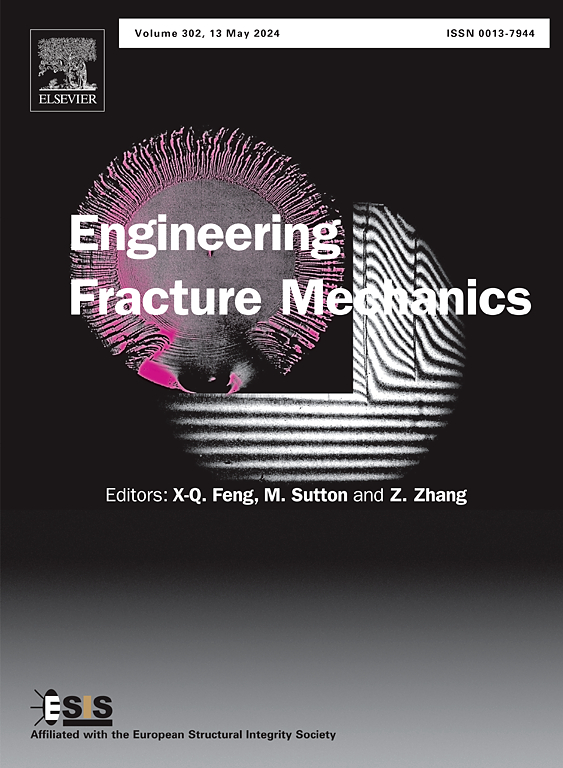An improved analytical formula of generalised stress intensity factors for blunt V-notches in orthotropic plates
IF 4.7
2区 工程技术
Q1 MECHANICS
引用次数: 0
Abstract
For anisotropic plates with notches, the notch stress field is not only related to the opening depth, notch angle and geometric size, but also closely related to the elastic properties of materials. In order to simplify the assessment method of notch stress and GSIF for single edge blunt V-notches orthotropic thin plate, a semi-analytical formula of notch stress field of anisotropic plate is proposed based on the characteristic equation of generalized biharmonic equation of anisotropic body. By equating geometric dimensions, opening angle and elastic properties of materials with equivalent strength factors of orthotropic materials, the notch stress field and GSIF of planar composite plates are simplified and solved. After a large number of finite element numerical cases and multi-parameter analysis, the empirical formula of dimensionless GSIF is obtained by fitting. The prediction results of the improved formula are compared with the GSIF and stress fields of numerical models under different materials and geometric conditions. The results show that the error between the predicted GSIF results and the numerical results by the semi-analytical formula proposed in this paper is less than 5%, which is more accurate than the traditional analytical formula. The related formulas and conclusions provide a basis for the design optimization and safety evaluation of composite blunt V-notches structures.
正交各向异性板中钝 V 形缺口的广义应力强度因子的改进分析公式
本文章由计算机程序翻译,如有差异,请以英文原文为准。
求助全文
约1分钟内获得全文
求助全文
来源期刊
CiteScore
8.70
自引率
13.00%
发文量
606
审稿时长
74 days
期刊介绍:
EFM covers a broad range of topics in fracture mechanics to be of interest and use to both researchers and practitioners. Contributions are welcome which address the fracture behavior of conventional engineering material systems as well as newly emerging material systems. Contributions on developments in the areas of mechanics and materials science strongly related to fracture mechanics are also welcome. Papers on fatigue are welcome if they treat the fatigue process using the methods of fracture mechanics.

 求助内容:
求助内容: 应助结果提醒方式:
应助结果提醒方式:


